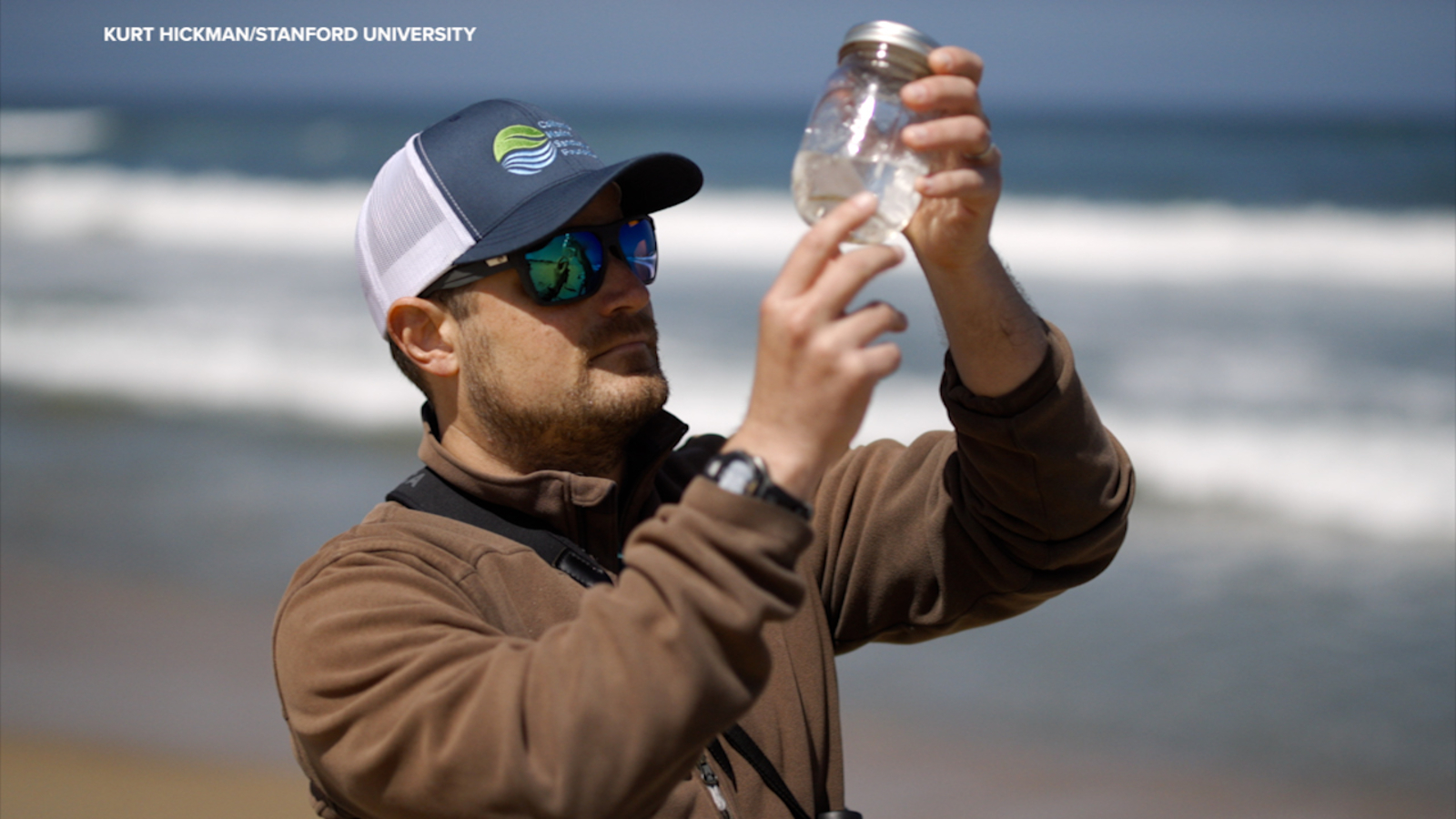
""So as a scientific community, we know that microplastics are everywhere, but we don't exactly know how they get everywhere or where they come from. And if we're going to do anything to mitigate this problem, that's a really important question that we need answered," says Savoca, who is based at Stanford's Hospkins Marine Station on Monterey Bay."
"According to NASA, roughly eight million tons of plastic wash into the ocean every year, but mapping the tiny particles that break down into microplastics takes an almost three-dimensional approach. Savoca's team uses seawater and delicate mesh filters, to painstakingly separate the buoyant plastic by hand. The goal is to understand where the samples are originating, and how they're being carried from their source to the sea."
""I think the work that we're doing is among the most detailed that's occurred from land to sea. And if we can figure out what sectors are more at play in the pollution that we see in the environment, then we can sort of work with those sectors to try to, reduce that pollution, into our local waterways," Savoca adds."
Stanford researchers track microplastics along Monterey Bay to trace sources and transport from land to sea. Roughly eight million tons of plastic enter the ocean each year, necessitating near three-dimensional mapping of tiny particles. Field teams collect seawater and use delicate mesh filters to painstakingly separate buoyant microplastics by hand. The work aims to determine where samples originate and how particles travel so targeted sector-based pollution reduction can occur. Modeling of microplastic transport seeks to explain distribution patterns in the ocean. Fragments bond with organic materials and are consumed by marine organisms at varying depths, complicating impact assessment.
Read at ABC7 San Francisco
Unable to calculate read time
Collection
[
|
...
]